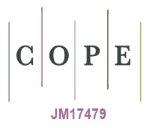Influence of Helium-Neon Laser on Some Virulence Factors of Staphylococcus Aureus and Escherichia Coli
DOI:
https://doi.org/10.23851/mjs.v29i3.619Keywords:
He-Ne laser, virulence factors, DNA plasmid, β-lactamase, hemolysin, S. aureus, E. coli.Abstract
This work aims to investigate the effect of Helium-Neon laser on locally isolated Staphylococcus aureus & Escherichia coli bacteria; their resistance pattern, virulence factors, and their plasmid content. Bacteria were collected from patient suffering from urinary tract infections, septicemia, wound, and burn infections, then isolates were identified according to their characteristics, features; morphological, biochemical tests, and API systems. Out of Eighty-seven samples, twenty-seven isolates of S. aureus and thirteen isolates of E. coli were isolated. The results showed that after laser treatment, the diameter of inhibition zone increased for almost of the used antibiotics beside some isolates became sensitive especially after 2 min of laser exposure time. The hemolysin production was disappeared in (%40) of E. coli and (%20) of S. aureus after ten min of irradiation, while it decreased to half in another S. aureus isolate. All S. aureus and E. coli isolates loosed their ability to produce β-lactamase enzymes; some of these isolates loosed it after 5 minutes and the others after 10 minutes of irradiation. The results showed that laser irradiation hasn't any effect at any exposure time on adhesion factors of both S. aureus and E. coli isolates. Plasmid profile of Irradiated E. coli illustrated disappearing of DNA plasmid bands as well as RNA after ten min of irradiation.Downloads
References
A. Faiz, Ch. Weaver, and M. Walsh, "Air Pollution from Motor Vehicles Standards and Technologies for Controlling Emissions," report submitted to United Nation, 1996.
J. C. Yeo and C. T. Lim, "Emerging flexible and wearable physical sensing platforms for healthcare and biomedical applications," Microsystems & Nano-engineering, vol. 2, pp.1-16, 2016.
W. Ding, Y. Jiang, R. Gao, and Y. Liu, "High-Temperature Fiber-Optic Fabry-Perot Interferometric Sensors," Review of Scientific Instruments, vol. 86, Issue 5, 2015.
S. Asaduzzaman, B. K. Paul, and K. Ahmed, "Enhancement of Sensitivity and Birefringence of a Gas Sensor On Micro-Core Based Photonic Crystal Fiber," in 3rd International Conference in Electrical Engineering and Information Communication Technology , 2016.
P. Russell, "Photonic Crystal Fibers," Science, vol.24, no. Issue 12, pp. 4729-4749, 2005.
B. Temelkuran, S. D. Hart, G. Benoit, J. D. Joannopoulos, and Y. Fink, "Wavelength-Scalable Hollow Optical Fibers With Large Photonic Band Gaps For Co2 Laser Transmission," Nature, vol. 420, p. 650–653, 2002.
M. N. Petrovich, A. Brakel, F. Poletti, K. Mukasa, E. Austin, and V. Finazzi, "Microstructured Fibers For Sensing Applications," in The International Society for Optical Engineering, 2005.
S. Olyaee, and A. Naraghi, "Design and Optimization Of The Index-Guiding Photonic Crystal Fiber Gas Sensor," Photonic Sensors, vol. 3, p. 131–136, 2013.
M. Morshed, M.I. Hassan, T.K. Roy, M.S. Uddin, and S.A. Razzak, "Microstructure Core Photonic Crystal Fiber For Gas Sensing Applications," Appl. Opt. , vol. 54, p. 8637–8643, 2015.
S. Asaduzzaman, and K. Ahmed, "Proposal of a Gas Sensor with High Sensitivity, Birefringence And Nonlinearity For Air Pollution Monitoring," Sensing and Bio-Sensing Research, vol. 10, pp. 1-7, 2016.
Md. Ibadul Islam, K. Ahmed, Sh. Sen, S. Chowdhury, B. Kumar Paul, Md. Shadidul Islam, M. Badrul Alam Miah, and S. Asaduzzaman, "Design and Optimization of Photonic Crystal Fiber Based Sensor for Gas Condensate and Air Pollution Monitoring," Photonic Sensors , vol. 7, no. 3, pp.234‒245, 2017., vol. 7, no. 3, pp. 234-245, 2017.
G. Renversez, and B. Kuhlmey, "Dispersion Management with Microstructured Optical Fibers: Ultra flattened Chromatic Dispersion with Low Losses," Optics Letters, vol. 28, pp. 989-991, 2003.
Downloads
Key Dates
Published
Issue
Section
License
Copyright (c) 2019 Al-Mustansiriyah Journal of Science

This work is licensed under a Creative Commons Attribution 4.0 International License.
(Starting May 5, 2024) Authors retain copyright and grant the journal right of first publication with the work simultaneously licensed under a Creative Commons Attribution (CC-BY) 4.0 License that allows others to share the work with an acknowledgement of the work’s authorship and initial publication in this journal.






















